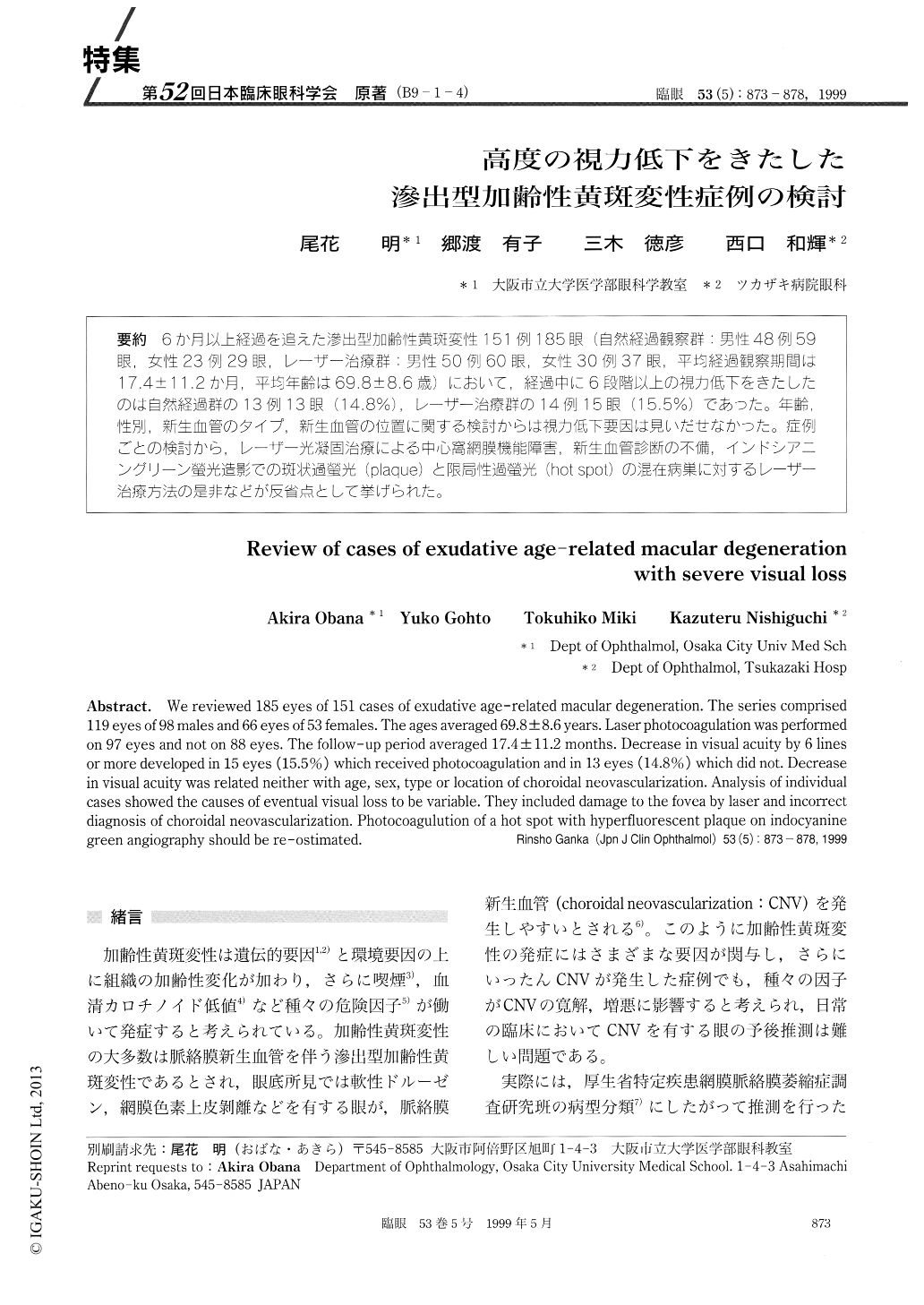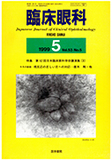Japanese
English
- 有料閲覧
- Abstract 文献概要
- 1ページ目 Look Inside
(B9-1-4) 6か月以上経過を追えた滲出型加齢性黄斑変性15例185眼(自然経過観察群:男性48例59眼,女性23例29眼、レーザー治療群:男性50例60眼,女性30例37眼,平均経過観察期間は17.4±11.2か月,平均年齢は69.8±8.6歳)において,経過中に6段階以上の視力低下をきたしたのは自然経過群の13例13眼(14.8%),レーザー治療群の14例15眼(15.5%)であった。年齢性別,新生血管のタイプ,新生血管の位置に関する検討からは視力低下要因は見いだせなかった。症例ことの検討から,レーザー光凝固治療による中心窩網膜機能障害,新生血管診断の不備,インドシアニングリーン螢光造影での斑状過螢光(plaque)と限局性過螢光(hot Spot)の混在病巣に対するレーザー治療方法の是非などが反省点として挙げられた。
We reviewed 185 eyes of 151 cases of exudative age-related macular degeneration. The series comprised 119 eyes of 98 males and 66 eyes of 53 females. The ages averaged 69.8±8.6 years. Laser photocoagulation was performed on 97 eyes and not on 88 eyes. The follow-up period averaged 17.4± 11.2 months. Decrease in visual acuity by 6 lines or more developed in 15 eyes (15.5%) which received photocoagulation and in 13 eyes (14.8%) which did not. Decrease in visual acuity was related neither with age, sex, type or location of choroidal neovascularization. Analysis of individual cases showed the causes of eventual visual loss to be variable. They included damage to the fovea by laser and incorrect diagnosis of choroidal neovascularization. Photocoagulution of a hot spot with hyperfluorescent plaque on indocyanine green angiography should be re-ostimated.

Copyright © 1999, Igaku-Shoin Ltd. All rights reserved.


